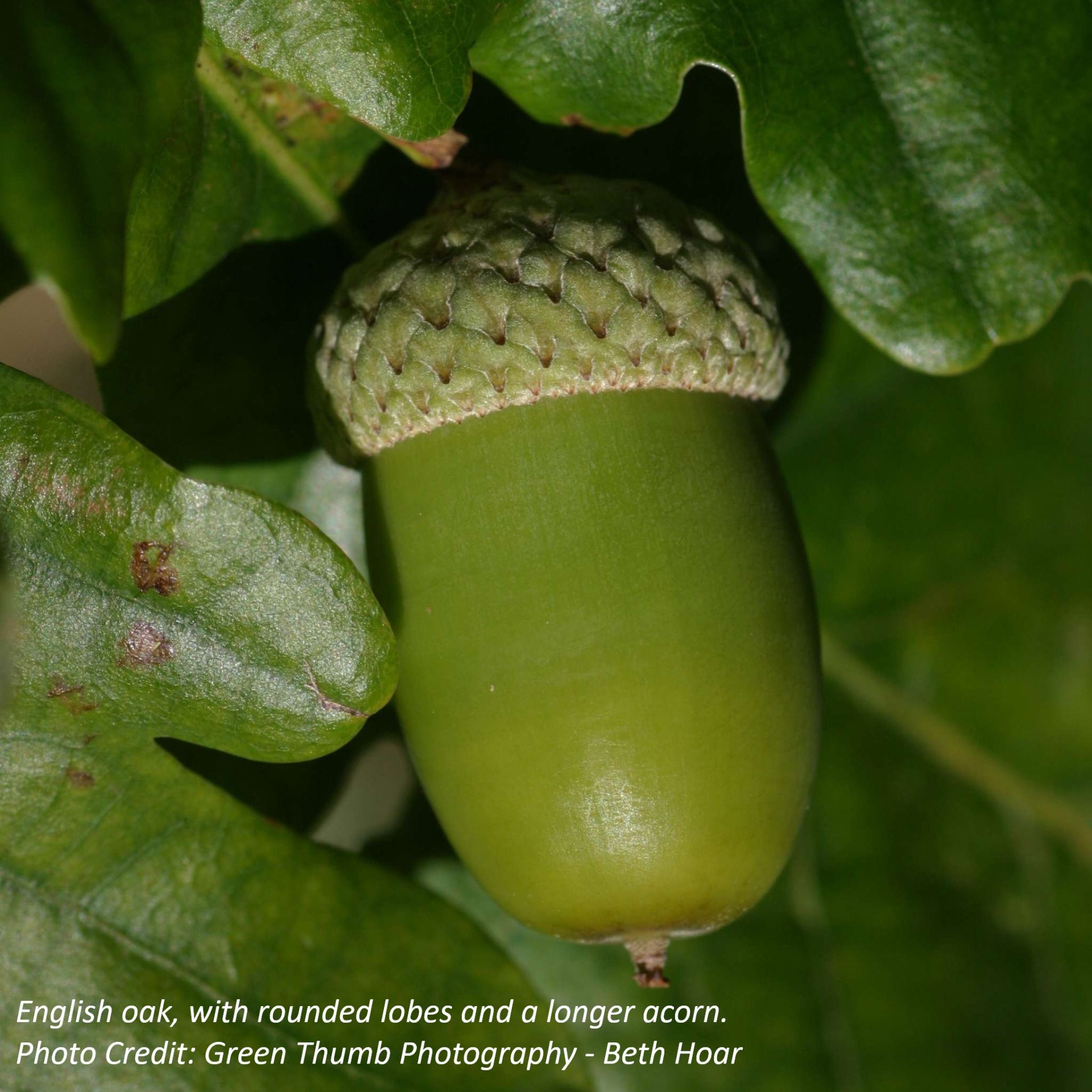Get Thee Back to England
August 19, 2025
By Gary Schneider
When I set up the Macphail Woods Ecological Forestry Project on the Macphail Homestead in Orwell, I wasn’t thinking much about invasive species. That probably was a mistake. The Homestead, like many places settled by Europeans, was full of plants from other places. Spreading from the trees and shrubs planted around the Macphail home were English oak, Norway maple, European linden, European mountain ash, and other species.
They reproduced like crazy, putting out tons of seed and having cheap and readily available planting assistants in the form of red squirrels, chipmunks, blue jays, and robins. Even the wind was helpful, spreading the winged seeds of Norway maple and linden.
And in a lot of cases, this led to non-native species outcompeting our native species. You might wonder if there is anything wrong with that – maybe it is just survival of the fittest.
Let’s zoom in on English oak. I think we can find beauty in a plant but perhaps not outside its native range. Or at least not develop a full-grown hate towards any plant. I couldn’t begin to count the number of people who have been to a workshop at Macphail Woods and then decided to collect some acorns from the English oaks. Even the name is more exotic – English oak, rather than the plain red oak. But is that an educated choice?
First of all, let’s look at the provision of food. Both red oak and English oak provide copious amounts of food that are well-loved by red squirrels, flying squirrels, chipmunks, blue jays, crows, and a variety of small rodents. Snowshoe hares will chew both of them over the winter. So they probably come out as a draw in their provision of food for wildlife.
What about as homes for birds? Neither are used as much as other species by cavity nesters, probably due to the hardness of the wood. But over the years I’ve noticed that English oak leaf out later than red oak. This means that a lot of the migratory forest-nesting birds don’t use English oak for at least their initial nesting, as their nests (and young) would be left exposed.
As for the value of the wood, red oak is the clear winner. English oak is a gorgeous tree in many parts of Europe, at least from pictures that I have seen. But in PEI, these oaks all seem to develop frost cracks along the stem that hastens their demise. The cracks can run almost into the centre of the trees and become perfect places for rot to set in. You can see the results of these cracks in some of the stumps to the south and east of the Homestead. Rot entered through the cracks and spread up and down the tree. We are trying to keep as many of the trees as possible, as they are part of the heritage of the Macphail Homestead, but more are dying each year.
You can see the same thing around the Homestead at the Brudenell Park, which was also at one time planted with English oaks. These trees have a relatively short lifespan, compared to a healthy red oak. And it means that for the most part, English oak in this province do not make very good lumber, while red oak is suitable for a variety of uses – everything from tables and veneers to flooring and mouldings.
Red oak is clearly one of our most valuable trees – whether we’re talking about native or non-native species. It is our provincial tree, has a deep tap root that makes it one of the most resilient trees in our forests, and to my eye is just drop-dead gorgeous. What’s not to like? We should all do our part to increase the numbers of red oak growing in our forests.
